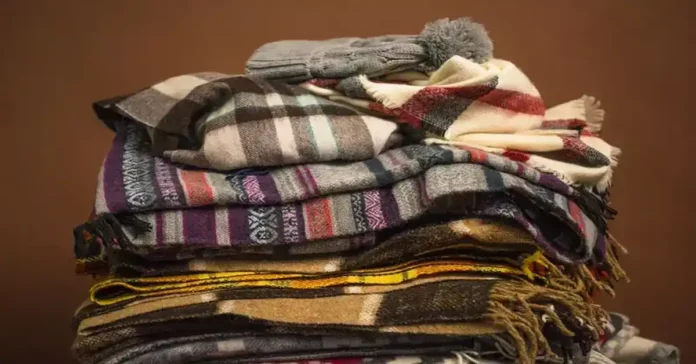Welcome to our comprehensive guide on storing winter clothes efficiently and effectively! Managing winter wear can be a challenge, from bulky coats to delicate fabrics. In this guide, we’ll delve into the importance of proper storage techniques, ensuring your winter wardrobe remains fresh and organized year after year.
Firstly, we’ll discuss the importance of decluttering your storage space. Clearing out items you no longer need or use creates more room for your winter clothes. We’ll also explore the benefits of using specialized storage solutions like box storage for delicate fabrics such as wool and cashmere. These containers help protect your clothes from dust, moisture, and pests, ensuring they stay in pristine condition.
Additionally, we’ll dive into utility storage for those bulkier winter coats, boots, and accessories. Utilizing shelves, racks, or hanging organizers can maximize space and keep items easily accessible. We’ll also cover the importance of rotating seasonal clothes, ensuring you have quick access to your summer wardrobe when the time comes.
By the end of this guide, you’ll be equipped with practical tips and tricks to keep your winter clothes in top condition while maintaining a neat and functional wardrobe. Let’s embark on this journey to a clutter-free and stylish winter wardrobe!
How to Store Winter Clothes – An Overview
Before storing your winter clothes, it’s essential to prepare them properly to ensure they stay in good condition until the next season.
Cleaning Winter Garments – Cleaning winter garments before storage is crucial to remove any dirt, stains, or odors accumulated during the season. Follow the care instructions on the clothing labels and consider dry cleaning for delicate items like coats or wool sweaters. Wash and thoroughly dry all items before packing them away.
Repairing Any Damages or Issues – Inspect each garment for damages such as loose buttons, torn seams, or missing zippers. Repair these issues before storing them to prevent further damage or deterioration. Sew loose buttons, mend seams, and replace any broken or missing fasteners to keep your clothes in top condition.
If you are a mountaineer for example or are fond of traveling to the Himalayas or Siberia during winters, then your winter wear is heavier and bulkier than most. Not to mention, it can take up a lot of space wherever it is kept.
Choosing the Right Storage Containers
Selecting the appropriate storage containers is key to preserving the quality of your winter clothes while they’re not in use.
Types of Containers Suitable for Winter Clothes
Consider using breathable containers such as fabric storage bins or canvas bags for your winter clothes. These containers allow air circulation, preventing moisture buildup that can lead to mold or mildew. Alternatively, plastic storage bins with tight-fitting lids can also be effective in keeping clothes protected from dust and pests.
Considerations for Material, Size, and Durability
When choosing storage containers, opt for materials that are sturdy and durable to withstand long-term storage. Ensure the containers are large enough to accommodate your winter clothes without overcrowding, which can cause wrinkles and damage. Label each container with its contents for easy identification when you need to retrieve specific items.
Taking these steps will save you time and effort when it’s time to bring out your winter wardrobe again.
Organizing Winter Clothes
Organizing your winter clothes can make a world of difference when it comes to finding what you need and keeping your wardrobe clutter-free. Here are some practical tips to help you organize and store your winter essentials effectively.
- Sorting your winter clothes by type and seasonality is the first step to a well-organized wardrobe.
- Separate your jackets, sweaters, coats, and other winter garments into categories to make them easier to find when you need them.
- Consider storing off-season items separately to free up space for your current winter wear.
- Using labels or tags for easy identification is a game-changer.
- Labeling your storage containers or shelves with the type of clothing inside can save you time and effort.
- You can use adhesive labels, hang tags, or even marker pens to mark the contents of each storage bin or shelf.
Utilizing Space-Saving Techniques
Vacuum-sealing bulky items like jackets and sweaters can save a significant amount of space. These airtight bags compress your clothes, reducing their volume and making them easier to store. Vacuum sealing is especially useful for storing seasonal items that you won’t need for a while.
Folding and stacking clothes efficiently is another space-saving technique. Fold your clothes neatly and stack them vertically in drawers or on shelves. This method not only saves space but also allows you to see all your clothes at a glance, making it easier to choose outfits.
Protecting Clothes from Moths and Mold
Moths and mold are common enemies of stored clothing. Here’s how to keep them at bay:
- Using Mothballs or Cedar Blocks: Mothballs emit a strong odor that repels moths, but they can be harmful to health. Consider cedar blocks or sachets as a safer alternative. Cedar naturally repels moths and has a pleasant scent.
- Ensuring Proper Ventilation and Moisture Control: Proper airflow and moisture control are crucial to prevent mold growth. Use breathable storage containers and avoid sealing clothes in plastic bags for long periods.
Storing Winter Accessories
Winter accessories like hats, gloves, scarves, and boots also need proper storage to maintain their condition:
- Tips for Storing Accessories: Store hats and scarves in hat boxes or hanging organizers to prevent wrinkles. Gloves can be kept in labeled bins, and boots should be cleaned and stored upright to maintain their shape.
- Utilizing Specialized Storage Solutions: Consider using specialized storage solutions like boot shapers, glove drying racks, and scarf hangers. These tools help organize accessories efficiently and keep them in good condition.
Creating a Rotation System
Rotating your winter clothes seasonally not only keeps your wardrobe fresh but also helps prevent damage:
- Rotating Winter Clothes: Store off-season clothes in a separate area to make room for current-season items. This prevents overcrowding and allows you to easily access what you need.
- Inspecting Stored Items: Before wearing stored clothes, inspect them for any signs of damage, pests, or mold. This proactive approach ensures that your clothes are ready to wear without any surprises.
Final Words for Store Winter Clothes
In conclusion, storing winter clothes effectively is essential for keeping your wardrobe organized and ensuring your clothes remain in good condition for the next cold season. By following the tips and strategies outlined in this guide, such as proper cleaning before storage, choosing the right storage containers, and protecting against pests and mold, you can preserve the quality of your winter garments.
Remember to rotate your clothes seasonally, inspect them regularly, and use specialized storage solutions for accessories to maximize space and freshness. With these practices in place, you can maintain a neat and tidy wardrobe year-round, ready to tackle the winter chill with ease. Happy organizing!
FAQs
A1: You should wash and dry them thoroughly to prevent mold, then fold or hang them neatly.
A2: You should avoid plastic as it can trap moisture; use breathable fabric storage bags instead.
A3: Use mothballs or cedar blocks in storage areas and regularly inspect garments for signs of moths.
A4: Yes, but clean and dry them first to avoid mold or odor transfer.
A5: Avoid damp or humid areas; choose a cool, dry space like a closet or under-bed storage.
A6: Check every few months for moisture, pests, or damage, and re-fold or rehang as needed.
A7: It’s not necessary but can save space; ensure clothes are completely dry before sealing.
A8: Yes, but avoid direct contact with clothes to prevent staining; place sachets near, not inside, clothing.
A9: Yes, you can choose to hang winter coats on sturdy hangers to maintain shape; consider using garment bags for added protection.
A10: You should do proper cleaning and make good storage conditions, winter clothes can be stored for several months to a year without damage.




